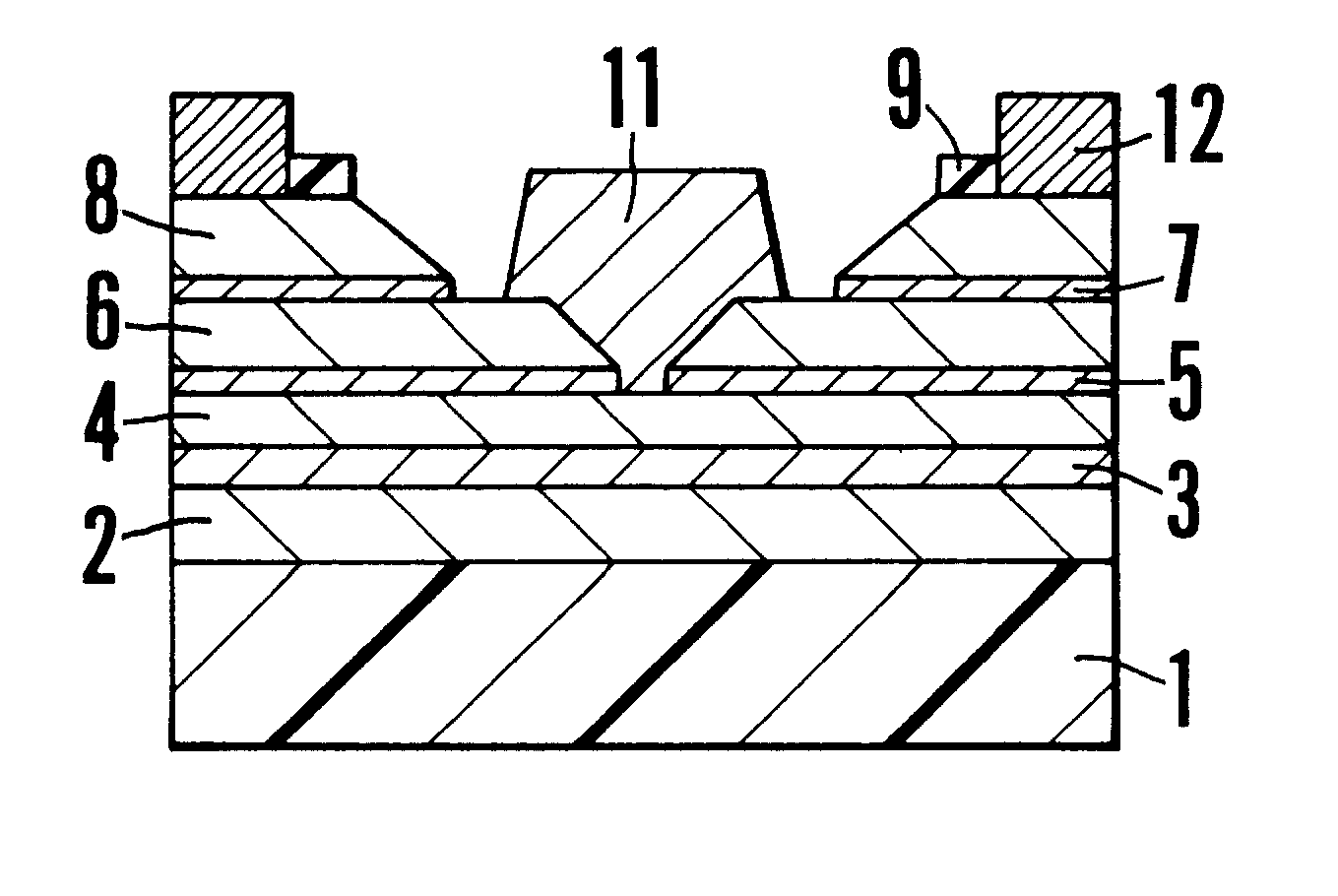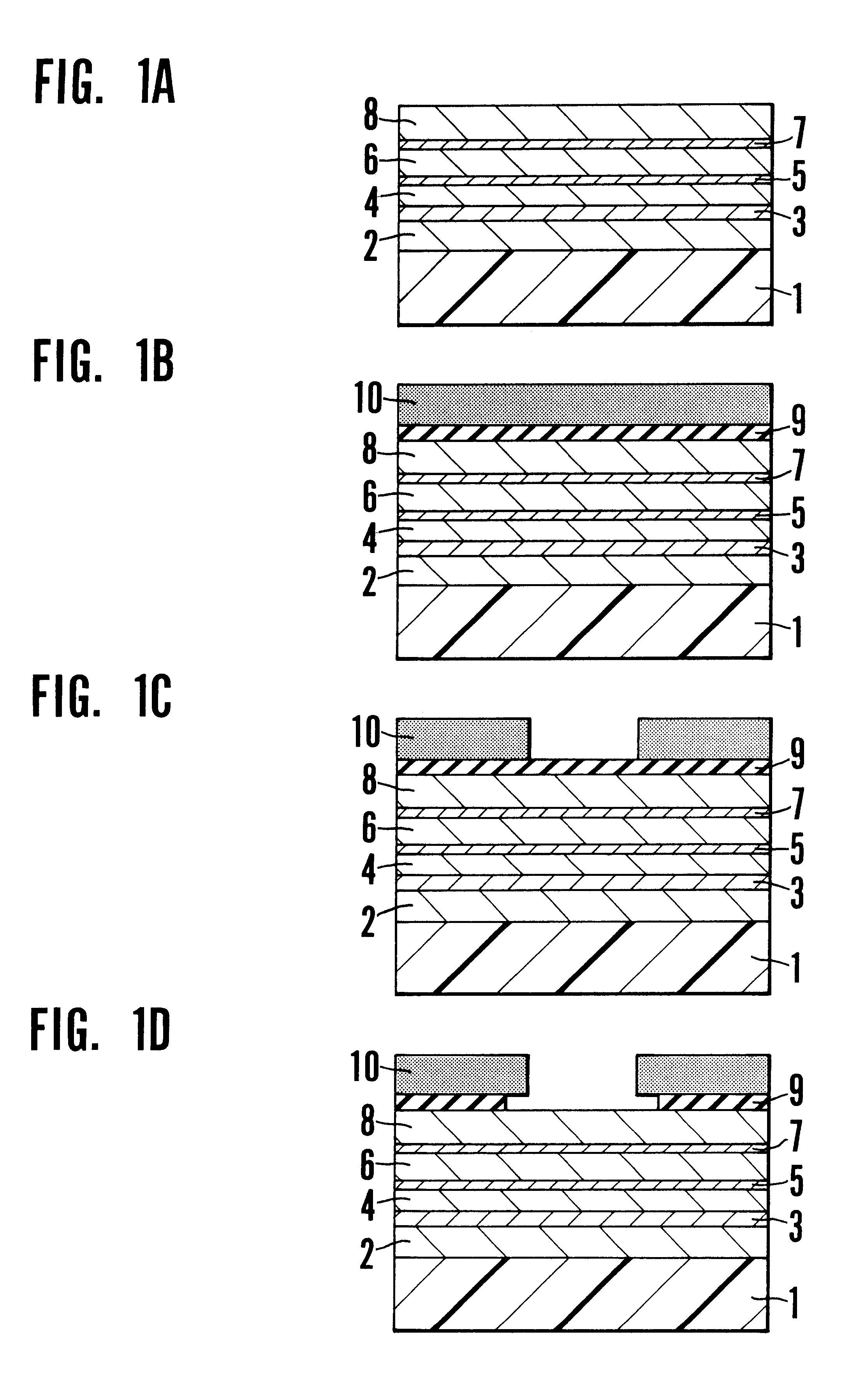Compound semiconductor device and method of manufacturing the same
a semiconductor device and compound technology, applied in the field of compound semiconductor devices, can solve the problems of poor reproducibility, inability to short gate and control the recess width, and difficult control and shorten the distance between the gate and the n.sup.+ region
- Summary
- Abstract
- Description
- Claims
- Application Information
AI Technical Summary
Benefits of technology
Problems solved by technology
Method used
Image
Examples
Embodiment Construction
A heterojunction field effect transistor according to an embodiments of the present invention will be described below with reference to the accompanying drawings (FIGS. 1A to 1L).
As shown in FIG. 1A, a 500-nm i-GaAs buffer layer 2, a 15-nm i-InGaAs layer serving as a channel layer 3, and a 33-nm n-AlGaAs layer 4 having a carrier concentration of 2.times.10.sup.18 cm.sup.-3 are formed on a semi-insulating GaAs substrate 1 by, e.g., MOCVD from the substrate side. A 2-nm n-AlAs layer having a carrier concentration of 2.times.10.sup.18 cm.sup.-3 is formed as a first recess etching stopper layer 5 on the resultant structure. A 150-nm lightly doped n-GaAs layer having a carrier concentration of 1.times.10.sup.18 cm.sup.-3 is formed as a first semiconductor layer 6 on the first recess etching stopper layer 5. A 2-nm n-AlAs layer having a carrier concentration of 2.times.10.sup.18 cm.sup.-3 is formed as a second recess etching stopper layer 7 on the n-GaAs layer 6. A 50-nm heavily doped n-G...
PUM
 Login to View More
Login to View More Abstract
Description
Claims
Application Information
 Login to View More
Login to View More - R&D
- Intellectual Property
- Life Sciences
- Materials
- Tech Scout
- Unparalleled Data Quality
- Higher Quality Content
- 60% Fewer Hallucinations
Browse by: Latest US Patents, China's latest patents, Technical Efficacy Thesaurus, Application Domain, Technology Topic, Popular Technical Reports.
© 2025 PatSnap. All rights reserved.Legal|Privacy policy|Modern Slavery Act Transparency Statement|Sitemap|About US| Contact US: help@patsnap.com



